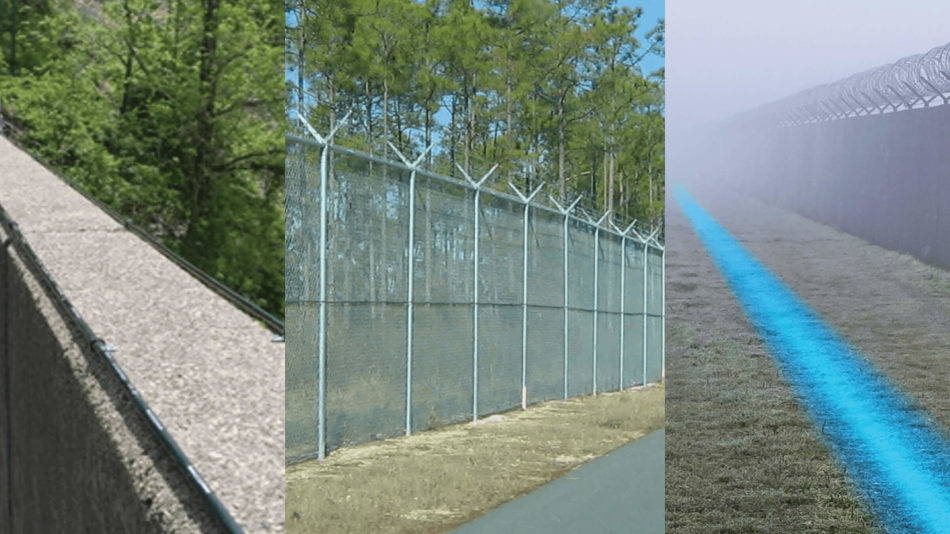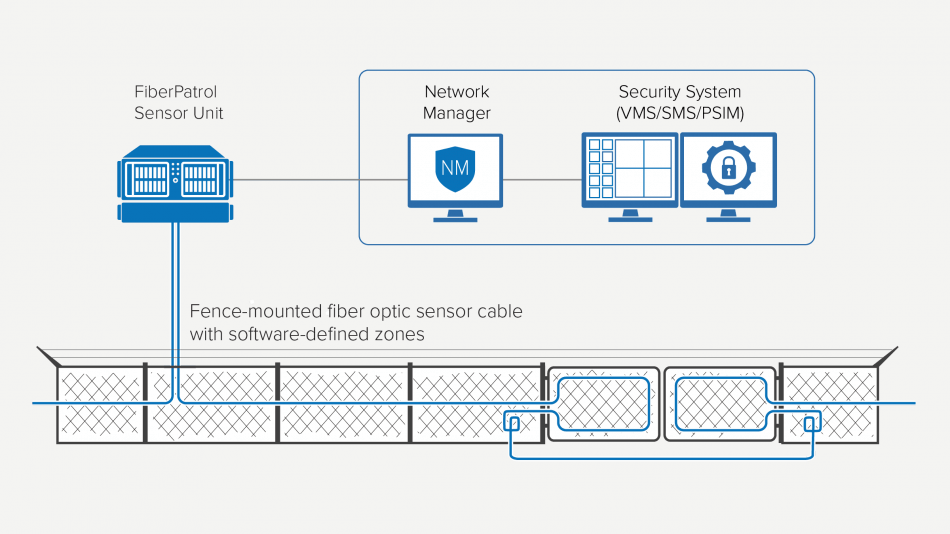How to Set Up a Fiber Optics Infrastructure for Security Installations in Commercial Spaces
How to Set Up a Fiber Optics Infrastructure for Security Installations in Commercial Spaces
Blog Article
Secure Your Residential Or Commercial Property With Reputable Fiber Optic Safety Solutions
In an era where safety risks are significantly innovative, the requirement for efficient protection solutions is critical. Fiber optic safety systems stand out by using exceptional reliability and performance, leveraging innovative light transmission modern technology to improve monitoring capabilities. These systems not only supply immunity to electromagnetic disturbance but likewise promise long-lasting cost efficiency through lowered upkeep demands. However, the choice to purchase such a remedy includes cautious factor to consider of numerous factors. Recognizing the complexities of fiber optic safety and security can light up the path to guarding your building better. What aspects should be discovered to maximize your financial investment?
Advantages of Fiber Optic Security
Fiber optic security services supply a series of advantages that make them significantly essential in today's electronic landscape. Among one of the most considerable advantages is their premium data transfer capability, which permits the transmission of big amounts of data over cross countries without substantial signal degradation. This capacity is especially helpful for protection systems that rely upon high-def video security and real-time monitoring.
Additionally, fiber optic cables are naturally extra safe than traditional copper circuitry. They are immune to electromagnetic interference, making them much less at risk to hacking or eavesdropping. This improved protection is vital for securing sensitive information and preserving the stability of surveillance systems.
Additionally, optical fiber are extra sturdy and immune to ecological factors, such as wetness and temperature changes, ensuring long-lasting integrity and reduced upkeep costs. The light-weight nature of fiber optic cable televisions additionally streamlines setup processes, enabling greater adaptability in system design.
Exactly How Fiber Optic Equipment Work
In modern safety applications, the procedure of fiber optic systems relies on the principles of light transmission with versatile glass or plastic fibers. These fibers are created to lug light signals over long ranges with minimal loss, making them optimal for transferring information associated to protection tracking. The core of the fiber, surrounded by a cladding material, makes sure that light signals continue to be had within the core with a phenomenon referred to as overall inner reflection.
When incorporated into security systems, fiber optic cords can send data from various sensing units, such as cams, activity detectors, and alarms, to a central surveillance station. The high bandwidth ability of optical fiber enables for the transmission of huge quantities of data concurrently, enabling real-time surveillance and timely response to possible threats.

Kinds of Fiber Optic Security Solutions
Different kinds of fiber optic protection remedies have actually emerged to enhance monitoring and security throughout various atmospheres. One popular option is fiber optic border breach detection systems (PIDS), designed to check and secure residential property limits with the discovery of resonances and disruptions along fiber optic cables. These systems give real-time signals, enabling timely feedbacks to unauthorized accessibility attempts.
An additional effective option is fiber optic video security. This modern technology leverages high-definition electronic cameras linked using fiber optic cable televisions to transmit video clip data over lengthy ranges without significant loss of quality. This setup is especially valuable in extensive areas, such as airport terminals and commercial websites, where standard copper cables may fail.
Additionally, fiber optic sensors are progressively made use use this link of for environmental tracking, identifying changes in temperature, pressure, or acoustic signals that might suggest safety breaches or hazardous problems. These sensing units supply high level of sensitivity and precision, making them excellent for important facilities protection.

Setup and Maintenance Tips
Reliable installation and upkeep of fiber optic safety and security solutions are important for ensuring their ideal efficiency and long life. Fiber optic cables need to be directed securely, preventing sharp bends or spins that can endanger their integrity.
Throughout installation, it is recommended to carry out complete screening of the system to confirm that all components are working properly. Normal maintenance checks need to be scheduled to examine the fiber optic cable televisions for any kind of indicators of wear or damage, along with to make certain that connections remain secure. Cleaning the connectors occasionally is also important to avoid signal loss as a result of dirt or particles.
Furthermore, index maintaining an updated stock of set up components and their specs can assist in simpler troubleshooting and upgrades. By adhering to these installation and maintenance tips, residential property owners can take full advantage of the effectiveness of their fiber optic safety and security services, making sure a reputable defense versus potential hazards.
Comparing Prices and Performance
When assessing fiber optic safety options, understanding the balance between prices and performance comes to be vital (security fibers). Organizations should take into consideration the ahead of time investment, recurring upkeep expenses, and the long-term value these systems supply. While fiber optic systems might need a greater initial installment expense contrasted to conventional copper circuitry, their durability and minimized sensitivity to electro-magnetic interference commonly equate to lower upkeep browse around this site expenses in time
Effectiveness is an additional critical element; fiber optic protection systems provide boosted information transmission rates and improved reliability. They can cover bigger distances without signal degradation, making them ideal for expansive residential properties or remote locations. Additionally, the high bandwidth capability supports sophisticated safety and security applications, such as high-definition video monitoring and real-time monitoring, which are essential for comprehensive safety monitoring.
Inevitably, the option between cost and performance must be guided by specific security needs and risk evaluations. Organizations must analyze their unique requirements, considering factors like building dimension, protection hazards, and technical developments. By performing a comprehensive cost-benefit analysis, stakeholders can make educated decisions that straighten with their protection goals while making sure a sound financial investment in fiber optic modern technology.
Verdict
In conclusion, fiber optic security solutions use significant advantages in terms of efficiency, reliability, and immunity to ecological interferences. Inevitably, the adoption of fiber optic technology stands for a forward-thinking method to securing properties versus evolving safety and security dangers.
Report this page